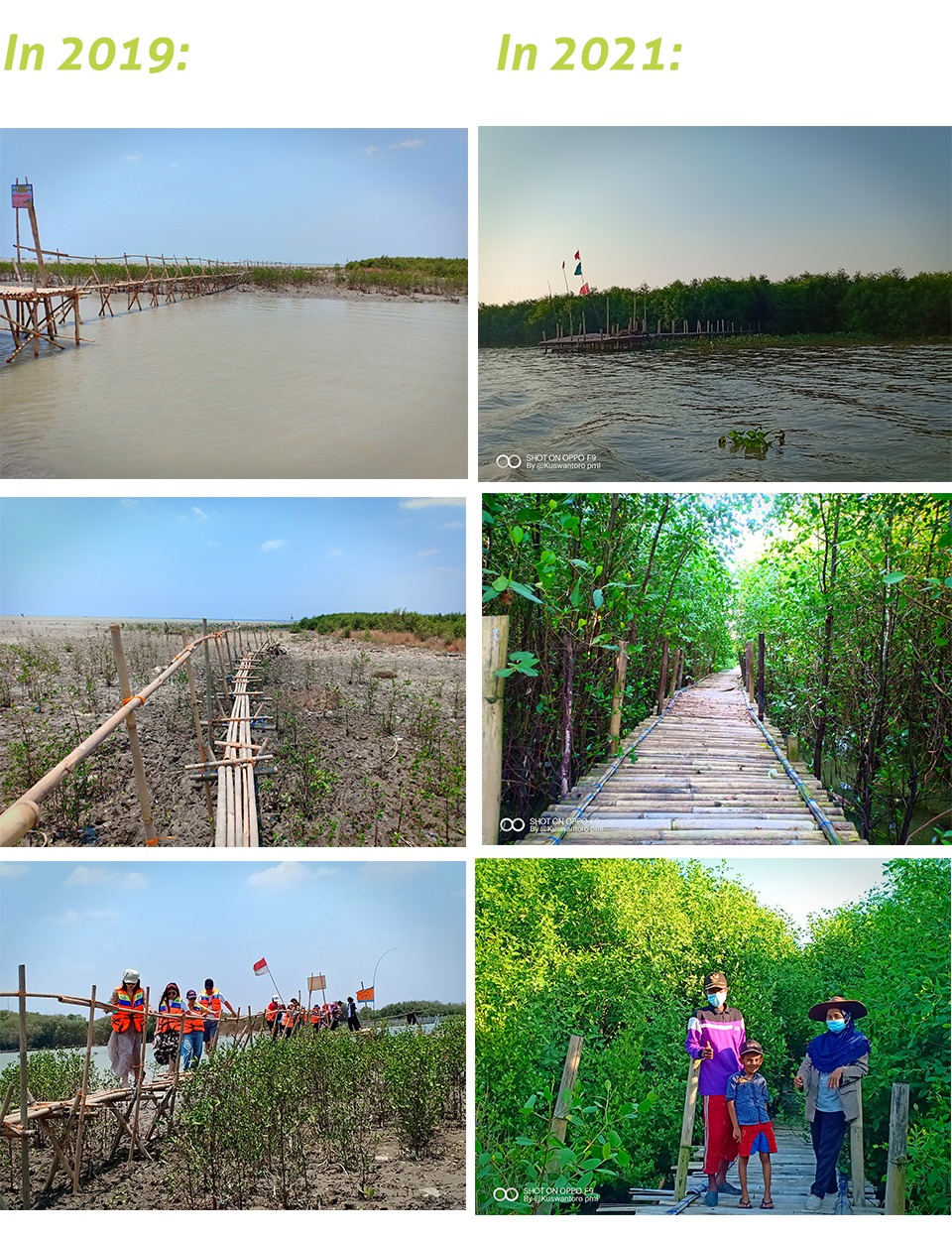
Mangrove green belt in Demak sees rapid mangrove recovery through fishpond conversion
-
Aquaculture, fisheries and coastal agriculture
-
Coastal resilience
-
Coastal wetland conservation
The construction of permeable structures to trap sediment and encourage mangrove recovery along the eroding coastline of Demak in North-Java has gained remarkable traction around the world. However, another approach that was piloted in this Building with Nature project is less known: the conversion of degraded fishponds into sedimentation basins that can be recolonised by mangroves. Monitoring shows impressive greenbelt recovery in 1.5 years’ time and illustrates that once conditions are right, mangrove can recover very quickly naturally, without any planting involved.
The project encouraged pond owners to convert (degraded) ponds into coastal mangrove for rehabilitation and was initiated in areas along the coastline where erosion was less severe. This activity was part of the Bio-rights approach that was used in Demak: in return for their engagement in conservation and restoration measures, communities receive financial and technical support to develop livelihoods by boosting sustainable aquaculture productivity and developing eco-tourism.
Within one year after the pond in Betahwalang village was converted, the sedimentation increased by 10 centimetres and mangroves had naturally grown up to 50 cm high. Monitoring results in 2019 show that the sedimentation improved further – the mangrove belt became around 12 ha wider and reached heights of 80-100 cm. Today, the mangroves have reached a height of about 2-3 meters. To maintain and protect this location, community groups carry out regular monitoring and put up warning boards. In collaboration with the village government, they have ensured the greenbelt a protected area through various regulations.
Following are pictures of various green belt mangrove areas taken at the same angle, in 2019 and again in 2021.

Once wide and strong enough, the restored coastal green belt will protect the hinterland from erosion, wind and wave exposure, and saltwater intrusion. The mangroves also enhance fisheries, store carbon and deliver non-timber forest products, education and eco-tourism.
Natural mangrove recovery critically benefits the ecosystem through site matching for optimal species and better survival, faster growth, and a more diverse and resilient mangrove forest than mangrove planting. Read more about Ecological Mangrove Restoration here.
By: Apri Susanto Astra, Kuswantoro and Eko Budi Priyanto, Wetlands International Indonesia
Building with Nature Indonesia is a programme by Wetlands International, Ecoshape, the Ministry of Marine Affairs and Fisheries (MMAF), Ministry of Public Work and Housing (PU), Witteveen + Bos, Deltares, TU Delft, Wageningen University & Research, UNESCO-IHE, Blue Forests, Kota Kita, Von Lieberman, the Diponegoro University, and local communities. The programme is supported by the Dutch Sustainable Water Fund on behalf of the Dutch Ministry of Foreign Affairs, The German Federal Ministry for the Environment, Nature Conservation and Nuclear Safety (BMU) as part of the International Climate Initiative (IKI), Waterloo Foundation, Otter Foundation, Top Consortia for Knowledge and Innovation, and Mangroves for the Future, and with contributions by all partners.
